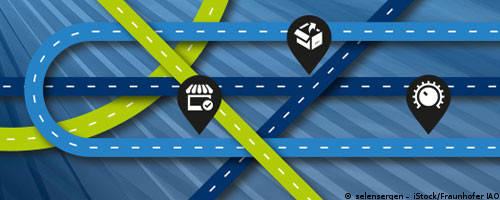
The main objective of innovation management is to foster and support the creation of attractive products and bring them into the market while reducing technical and market risks. But the simple economic mantra is no longer enough. Sustainability has evolved into a new guiding principle for business in the last few years. The question now is how sustainability and innovation management can be integrated in a practical context. What are practical implications when creating “eco-innovations”, i. e. successful and eco-friendly products?
Challenge as a chance: Sustainability as Innovation channel
Let’s have a look at an example: the application of solar thermal technology in an industrial environment in a paintshop. Paint shops are production facilities for surface coating. Such a coating – often: paint – can physically protect a surface and provide an optically attractive impression.
In the automotive industry, a paint shop comprises of many different process steps, e.g. cleaning, de-greasing, dip coating, drying and curing, spray coating and quality control. These processes require energy in different forms: mainly electricity and process heat. Overall, a paint shop consumes up to 70% of the energy needed for building a motor vehicle. Therefore, paint shops are in the focus of attention when it comes to calls for reaching greater sustainability in automotive production.
Now, increased sustainability in production processes can be achieved by different means, one of them is the use of renewable energy for process heat. In an automotive paint shop, process heat is used in various processes, For instance, it is required in dip bathes, which are used for the application of corrosion protection in the so-called pretreatment process.
In practice: How ecology pays off
Solar thermal solutions can provide energy for this. The companies EISENMANN AG and Ritter XL Solar provide solar heating installations in large-scale industrial projects (in the so-called “Green alliance for a sustainable production”). Ritter provides its high performance vacuum-tube solar collectors and Eisenmann as a systems provider integrates the technology into paint shop processes.
Both companies have developed an engineering concept allowing hot water from solar thermal modules to be used to supply process heat into industrial processes. It was already implemented at a customer site in Switzerland. At the paintshop of the customer Zehnder, 80 vacuum-tube collectors were installed on an area of 400 square meters. With a solar power output of 220 kilowatts, Zehnder can save up to 50% of yearly its yearly LPG (gas) consumption and thus increase its use of renewable energies correspondingly.
 Installation of solar thermal solution at Zehnder paintshop in Switzerland | © Eisenmann AG
Installation of solar thermal solution at Zehnder paintshop in Switzerland | © Eisenmann AGIn this example, an eco-innovation has been created with clear customer benefits and a positive impact on business and environment. The most important success factors to implement this eco-innovation were:
- a detailed understanding of the system and the processes where the solution is integrated (in this case, the customer’s existing paintshop),
- the early integration of sustainability aspects into the assessment of alternative solution concepts developed,
- a successful collaboration between Ritter XL solar as the technology provider and Eisenmann AG as the systems integrator.
In the end, the achieved results could prove a value to the customer on the one hand and show sustainability impact on the other hand.
What are your experiences with eco-innovations? Share your thoughts with us on the R&D Conference 2014 at Fraunhofer IAO in Stuttgart (June 3-6) and visit the special session on Sustainability and R&D Management. Research ideas as well as experiences from practitioners are welcome!
Claus Lang-Koetz (re-posted from http://blog.iao.fraunhofer.de)


